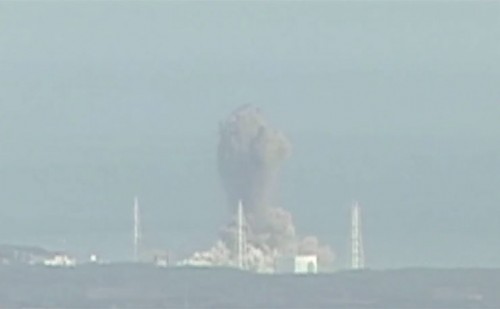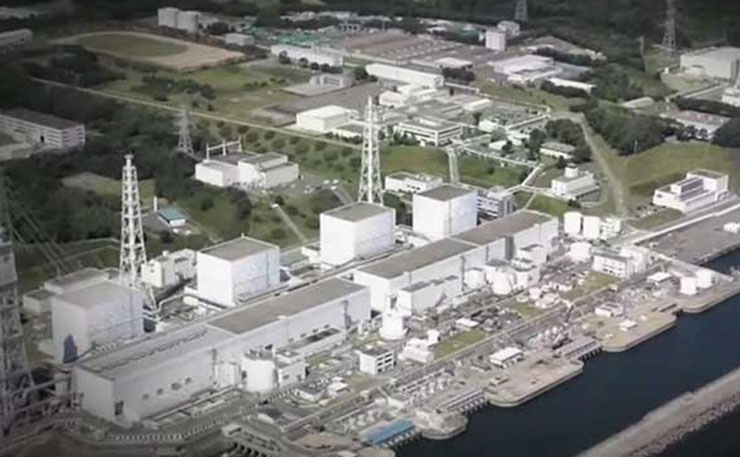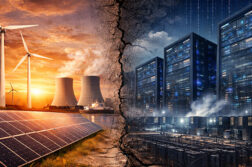SBS recently ran a mostly terrific 3 part documentary on uranium a couple of weeks back. It was presented by physicist Dr Derek Muller and written and directed by Wain Fimeri.
The science on display was mostly many decades old, but Muller and crew managed to fly to more than a few nice places to talk about it, and it was presented in a wonderfully clear and engaging way.
Unfortunately, when our intrepid physicist turned to cancer, the colour and detail vanished and it was like the last three decades of cancer research had vanished without trace.
We are told that cancers can take decades to develop without any mention of how or why; which is critically important. If Muller understood a little more about cancer, he might not have missed asking and answering the big question about Fukushima.
What is it? We’ll get to it soon enough.
Here’s an analogy for the cancer process as understood in the 1950s at the dawn of the anti-nuclear movement; it’s implicit in Muller’s presentation and still dominates public thinking.
Imagine a marble at the top of a very long flight of stairs. If you are unlucky, radiation or something else might dislodge the marble and it will begin inexorably bouncing its way to the bottom. When it gets to the bottom you have cancer and the blame would be levelled at the thing which first bumped the marble.
Many people have this analogy in mind while also understanding that DNA and mutations are involved somewhere along the way.
Back in the 1950s when this model dominated scientific thinking when scientists thought wrongly that mutations were incredibly rare, occurring “once in a hundred thousand generations”. They thought mutations were always dangerous and caused either cancer or birth defects.
The model wasn’t just wrong, but kind of upside down. Cancer experts know this, but it seems that they and team physics don’t talk to each other much.
Here’s a better cancer analogy. The marble is at the bottom of the stairs and sometimes gets bumped up a stair. Radiation can do that, and so can breathing; really… via free radicals from energy metabolism.
Some time later, something else might bump the marble up another stair, and if the marble reaches the top, then you have a malignant tumour. But mostly the marble just falls back down; meaning that the DNA damage is repaired.
Everything about those 1950s theories which spawned the anti-nuclear movement is now known to be wrong. We now understand that DNA damage is ubiquitous… 10,000 pieces a day in every cell in your body with the occasional piece due to radiation.
Bump radiation levels up to 400 times natural background levels and you’ll get about 10,012 pieces of damage per cell per day. A radiotherapy treatment, where the goal is to kill cells, typically delivers in 5 minutes about 65 million times the radiation you’d normally get in 5 minutes. And even that doesn’t reliably kill cells; they are tough suckers.
A would-be tumour, usually (but not necessarily) resulting from a mutation, generally has to be nurtured for decades before it can become dangerous. This nurturing is generally done with poor lifestyle choices.
But for some unfortunate people, dodgy genes turn the cancer staircase into a flattish ramp. A cancer isn’t a car crash after something buggers the brakes. It may start in one cell, but over time it makes friends, develops supply lines and skills, and eventually gains the capacity to launch a mutiny.
Muller’s focus on physics to the neglect of cancer leads, at the conclusion of the last episode, to him trudging around a derelict abandoned town near Fukushima wearing a worried frown and suggesting that nuclear power isn’t ready: ” … we don’t need to risk another place like this ….”
He seems to think radiation caused the Fukushima evacuation. When a person chops off their arm because of a mole on their hand, do you blame the mole?
The International Atomic Energy Agency (IAEA) has guidelines on when evacuations are recommended in the case of a reactor radiation release.
The guidelines are based on good science but the Japanese Government ignored them and behaved more like a cabal of anti-vaccination nutters; and the irrationality continues to this day.
The level of radiation at which evacuation is recommended (Operational Intervention Level 2) is more than double the peak that was ever measured in the evacuation region.
In round numbers it’s when radiation hits about 400 times the background level.
Remember, I used this factor above… for good reason!
So what was the big question Muller missed as he walked around Fukushima?
Simple: “What would have happened if there was no evacuation but everybody just stayed where they were and got on with their lives?”
The answer is in two parts because there are two kinds of deadly risk: things that alter when you die and things that mainly affect only how you die.
Fall off a roof installing or cleaning a solar panel and you might die, or end up crippled. That’s a serious impact not just on how you die but on when, or perhaps on how you spend a large part of your life.
Fukushima never subjected any member of the public to such a risk. The workers faced numerous risks common to large industrial accidents; but nuclear workers rarely face the serious daily risks faced by truck drivers, timber workers or anybody regularly using a ladder.

This was the biggest nuclear problem in almost 30 years and nobody suffered anything like the seriousness of injury you might sustain falling off a roof or a ladder; this is an extraordinarily safe industry.
So the immediate risks from the Fukushima meltdowns was zero. No member of the public was ever at risk of getting enough radiation to get even a little bit sick, let alone seriously sick. The only immediate risk they faced, and it proved quite deadly, was from its Government and the anti-nuclear panic merchants of doom.
The Government caved to the nutters and ordered a rushed, forced and unplanned evacuation. That caused at least 150 human deaths and many thousands of animal deaths as farmers left animals to die or thirst and starvation. It also caused suicides and on-going despair.
That much is clear, but what about the long term risks?
We know a lot about these from what happened to the survivors of the atomic bombings at Hiroshima and Nagasaki. We know how much radiation they got and what happened to their cancer rates.
Remember that factor that I keep mentioning? 400.
That IAEA Operational Intervention Level 2 is roughly this level. If you look at the atomic bombing survivors who got this amount (about 1 Sievert), they got it in minutes, hours or days. This means a lot of marbles got bumped up a lot of steps.
What happened to the cancer rate in these people? It rose about 7.5 percent.
This had a slight impact on how some of them died, but almost no impact on when. Their median loss of life was about 2 months.
This allows us to make a rock solid ‘worst case’ estimate of what would have happened without an evacuation. The median loss of life from any extra cancers would have been far less than 2 months.
Let’s put that in perspective by comparing it with other ways of raising cancer risk.
Imagine that you moved 150,000 people from Japan to Australia to spare them that Fukushima radiation. Studies of migrants over many decades tell us that their cancer rates would rise as they adopted the lifestyle of their new home.
How much would their cancer rates rise? About 50 percent. Relative to the traditional Japanese lifestyle, living as we do in Australia is about 7 times more carcinogenic than surviving an atomic blast, and it dwarfs anything possible at Fukushima.
If you move 150,000 Japanese to Australia, then on average, instead of 30,000 of them getting cancer before age 75, the rate would rise to approach 50,000 over time. Now that’s what I call dangerous.
But neither an Australian lifestyle nor the tragically inflated risks of nuclear power compare with the very real risks of climate change, and we know that historically only one energy source has ever given fossil fuels any competition… nuclear power.
Donate To New Matilda
New Matilda is a small, independent media outlet. We survive through reader contributions, and never losing a lawsuit. If you got something from this article, giving something back helps us to continue speaking truth to power. Every little bit counts.




